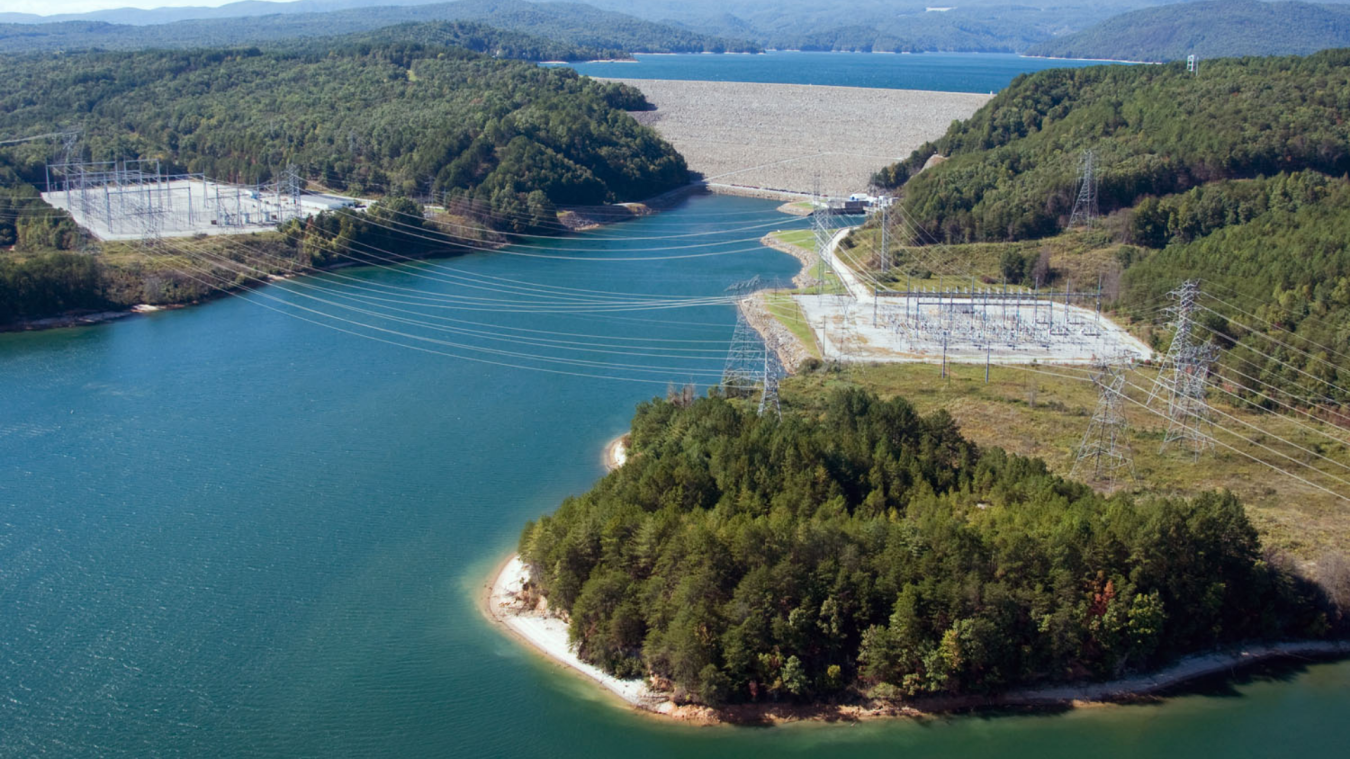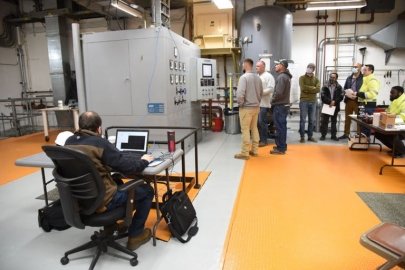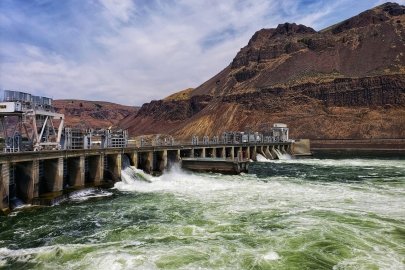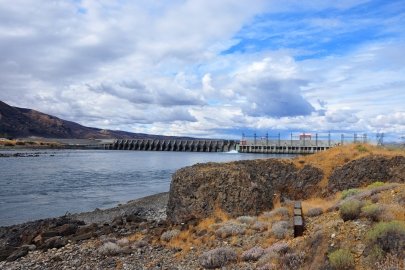Pacific Northwest National Laboratory partners with the International Forum on Pumped Storage Hydropower to develop a series of reports on pumped storage hydropower capabilities, costs, and innovations.
Water Power Technologies Office
March 9, 2022HYDROPOWER PROGRAM
Grid Reliability, Resilience, & Integration (HydroWIRES)
Project Name: U.S. Engaging With International Partners to Promote Opportunities for Pumped Storage
Project Team: Pacific Northwest National Laboratory
Lead Recipient Location: Richland, Washington

Pacific Northwest National Laboratory partnered with the International Forum on Pumped Storage Hydropower to develop a series of reports on how policy and markets, sustainability, and capabilities, costs, and innovation can support or hinder the development of pumped storage hydropower (PSH). The team also provided key recommendations and findings based on their research. The series of reports includes:
- Working Paper on Sustainability of Pumped Storage Hydropower
- Pumped Storage Hydropower Capabilities and Costs
- Pump It Up: Recommendations for Urgent Investment in Pumped Storage Hydropower to Back the Clean Energy Transition
- Innovative Pumped Storage Hydropower Configurations and Uses.
The policy and market working group made seven key recommendations to help ensure PSH will be deployed at the scale needed to support an efficient and reliable energy transition. These recommendations include:
- Policymakers should assess the long-term storage needs of their future power system now, so that the most efficient options, which may take longer to build, are not lost.
- Comparisons between energy storage and flexible options must follow a consistent, technology-neutral approach that considers all impacts and benefits.
- Providers of essential electricity grid, storage, and flexibility services should be remunerated for all services they provide.
- Licensing and permitting arrangements must be timely and proportionate and take advantage of the range of internationally recognized sustainability tools.
- Investors in long-lasting assets, such as PSH, must have long-term visibility of revenues with risk that is shared fairly to deliver the lowest overall cost to society in the long term.
- Existing hydropower assets and prospective sites should be assessed and mapped for their potential to provide the most efficient long-duration storage.
- Green recovery programs should include and support PSH, and green finance mechanisms should incentivize PSH.

Known as The Marvel in the Mountain, South Carolina's Bad Creek Hydroelectric Station started operating in 1991. The pumped storage hydropower plant can hold up to 1,065 megawatts of renewable energy. Photo courtesy of the National Hydropower Association
The sustainability working group developed five key findings to illustrate the wide range of tools and methods that can help ensure PSH is sustainable. These findings include:
- PSH should be considered as a key enabler of the clean energy transition, alongside other energy storage technologies.
- The development of PSH projects should rely on a multilevel approach, including an assessment of the storage, flexibility, and ancillary services that a given power system needs and an assessment of the options available to meet those needs. Once selected, the PSH project should be managed to avoid, minimize, and mitigate social and environmental impacts.
- PSH projects are site-specific and sustainability cannot be defined by a simplistic classification. Existing sustainability tools for conventional hydropower projects are flexible and sophisticated to allow for these nuances as the application of life cycle analysis to PSH projects is still nascent and mainly in the research domain.
- While potentially of value, specific attention must be given to the boundaries and functional units of the power system, such as the underlying energy mix. There is no evidence to suggest a material difference in greenhouse gas emissions from PSH reservoirs compared to conventional hydropower reservoirs, which fall between those of wind energy and solar power on average.
- PSH projects, as with many hydropower projects, can generate one-time or permanent local benefits, which should be considered in their sustainability assessment.
The capabilities, costs, and innovation working group found that simplistic capital expenditure comparisons could be misleading as PSH has a much longer life than many other energy storage technologies. The group also highlighted three categories with emerging innovations:
- Furthering PSH potential: Installing PSH at disused mines, underground caverns, non-powered dams, and conventional hydropower plants, as well as location-agnostic underground, off-river, and seawater PSH, represent vast untapped potential.
- Retrofitting and upgrading PSH systems: The latest technological advancements, such as the use of variable-speed pump turbines and hydraulic short circuit, can enhance the services provided by existing PSH,
- Developing hybrid systems: Coupling PSH with batteries, floating solar photovoltaic, heat storage, and desalination can provide additional services with reduced costs and environmental impacts.
Grid Reliability, Resilience, & Integration (HydroWIRES) Projects
-
 National laboratories and local utility demonstrate how small hydropower and energy storage technologies can provide emergency power to communities during regional grid disruptions.
National laboratories and local utility demonstrate how small hydropower and energy storage technologies can provide emergency power to communities during regional grid disruptions. -
 WPTO partners with General Electric to learn how pumped storage hydropower can accelerate the transition to a clean energy economy while helping to reduce local electricity costs.
WPTO partners with General Electric to learn how pumped storage hydropower can accelerate the transition to a clean energy economy while helping to reduce local electricity costs. -
 National laboratory team details approaches and develops a tool for developers and other stakeholders to value a full range of pumped storage hydropower services and contributions to the grid.
National laboratory team details approaches and develops a tool for developers and other stakeholders to value a full range of pumped storage hydropower services and contributions to the grid. -
 Researchers develop a report quantifying hydropower’s contributions to grid resilience and release an accompanying framework and toolkit to allow stakeholders to assess hydropower’s role under various extreme grid conditions.
Researchers develop a report quantifying hydropower’s contributions to grid resilience and release an accompanying framework and toolkit to allow stakeholders to assess hydropower’s role under various extreme grid conditions. -
 Oak Ridge National Laboratory creates a centralized dataset that provides an overview of available resources at hydropower facilities and their energy storage potential.
Oak Ridge National Laboratory creates a centralized dataset that provides an overview of available resources at hydropower facilities and their energy storage potential. -
 Study reveals how cross-continental integration of large amounts of wind, solar, and hydropower could support a low-carbon future grid and quantifies system benefit of hydropower flexibility.
Study reveals how cross-continental integration of large amounts of wind, solar, and hydropower could support a low-carbon future grid and quantifies system benefit of hydropower flexibility. -
 National laboratories contribute to International Energy Agency report on the unique role hydropower plays in service to power systems around the world.
National laboratories contribute to International Energy Agency report on the unique role hydropower plays in service to power systems around the world.
WPTO's Hydropower e-newsletter features news on R&D and applied science to advance sustainable hydropower and pumped-storage technologies.
The WPTO e-newsletter brings funding opportunities, events, publications, hydropower, and marine energy updates directly to your inbox.


